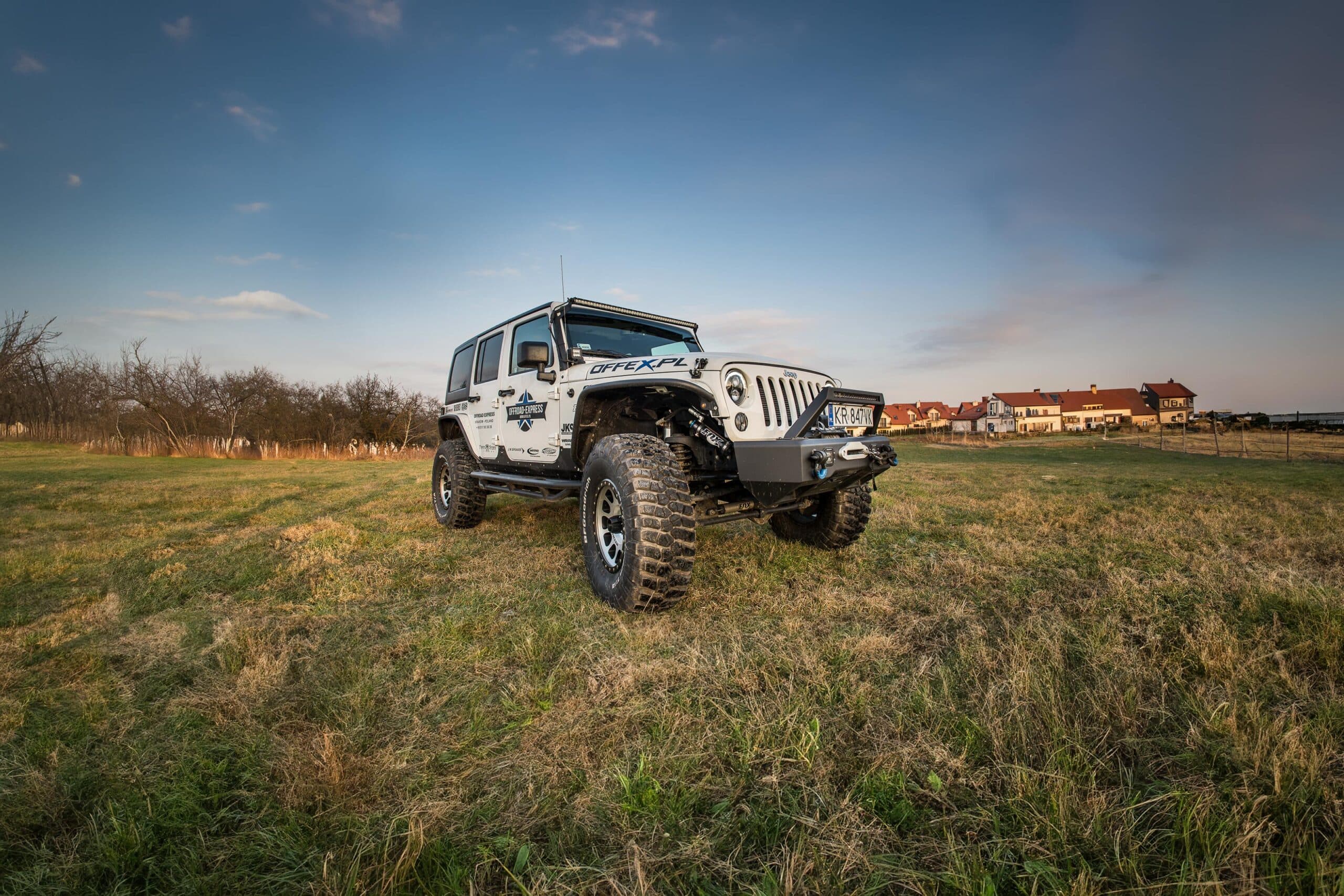
Suspension lift basics: everything you need to know
If you’re interested in off-roading, you’ve probably heard about lifting a car. You wonder why raising the car is so important for off-road driving, how it affects the car’s performance, and how to do it? Don’t waste your time searching. Keep reading to find out everything you need to know about suspension lift, once and for all.
What is a vehicle lift
The tasks and definitions of a suspension lift actually depend on how it’s done. Each one changes the vehicle’s structure in some way. So, we can identify three types and results of lifts:
- increasing space in the wheel arch above the wheel,
- increasing clearance, lifting the car,
- raising the lowest chassis parts higher off the ground.
In each of these cases, the wheels’ position doesn’t change and they still touch the ground, at least when the vehicle is parked on a flat road ;).
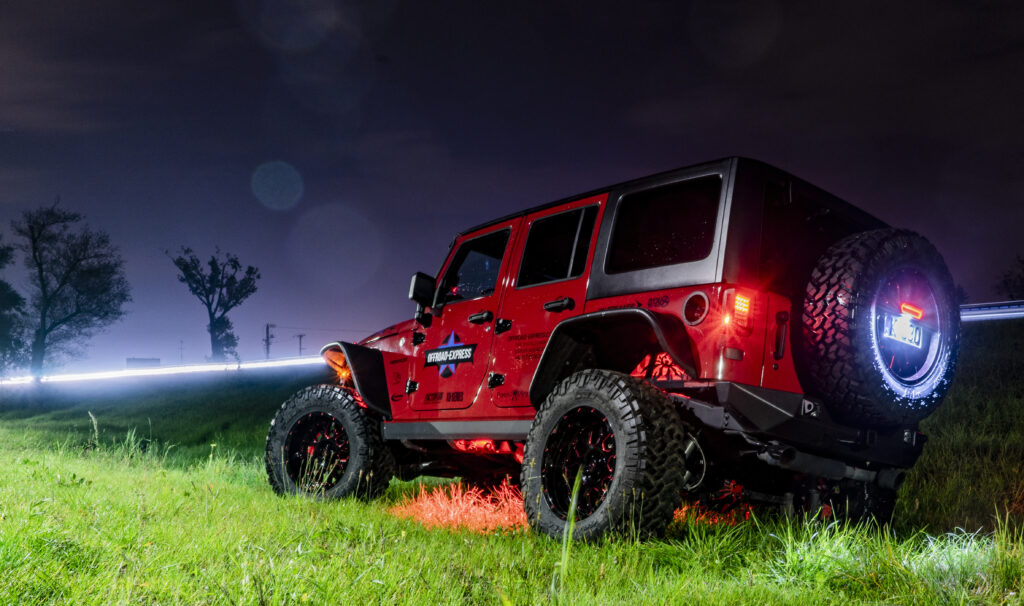
To summarize, a car is lifted to raise it, generally to increase its height, to extend the distance between the lowest chassis parts and the ground. In short – the car goes up.
If it’s still not clear to you, imagine a race car compared to an off-road car. You should see that one of them is very close to the ground, while the other often requires additional steps to comfortably get into it. Now you surely understand what I mean.
Why lift off-road cars
Lifting a car, next to big wheels with the right tires, is basically a must-have feature in a vehicle prepared for difficult terrain. More details are in our article on how to start off-road driving.
In the previous paragraph we wrote about the purposes of a lift. Now it’s time to ask ourselves why exactly we lift a car and increase its clearance. Off-road driving is quite a challenge for a vehicle. Rocky slopes, or deep ruts, and various surprises on the road, like tree roots sticking out, all make it clear that good traction is required. But it’s also important to protect the key suspension components of the vehicle. These are the most exposed to damage while off-roading.
Installing a lift is also an easier way to fit larger wheels and wider tires. Importantly, just changing wheels can also be a way to lift a car. So, as you see you have many options.
Types of lifts, or ways to lift a car
Of course, there are more reasons for doing a lift, but we intentionally don’t mention them now. Before that, you should know that lifts are traditionally divided into two groups, that is, body lifts and suspension lifts. Where the second category have various types, which looks like this:
Body lift – raises only the body mounted on the frame. It’s done by installing several spacers between the body and the frame. Its main goal is to fit larger wheels and raise the body of offroad cars. While it doesn’t change the specifics of the suspension’s work, it does change the center of gravity. As a result, it may negatively impact the vehicle’s handling.
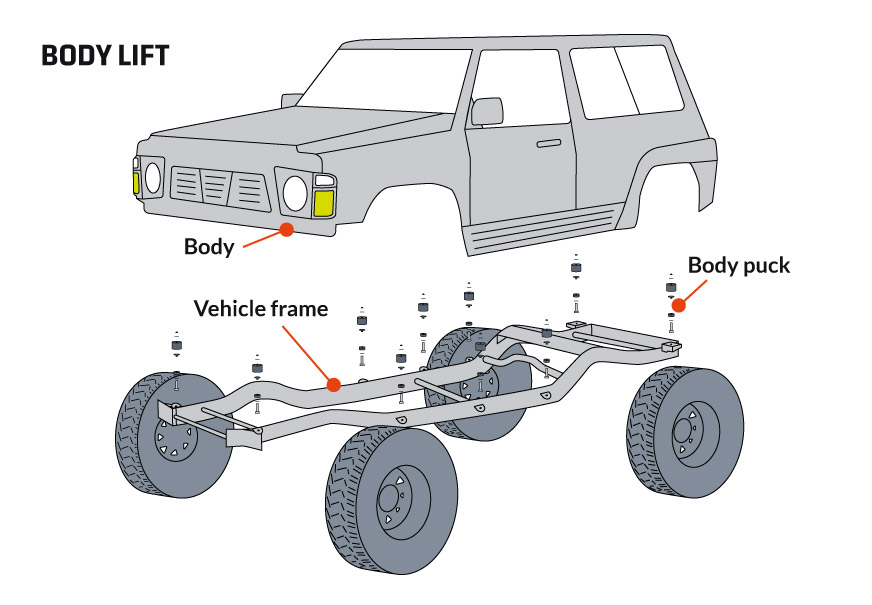
Body lift kits
Leveling kit – raises the front of the vehicle to be level with the back. It’s done by installing spacers above the spring. Its goal is to straighten the car’s natural slope, highlight the off-road character of the vehicle, and fit larger wheels.
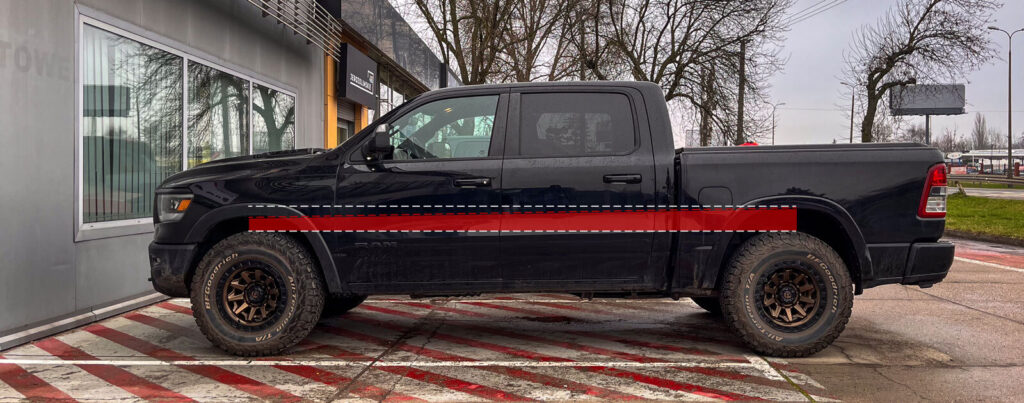
Suspension leveling spacers
Spacer kit – raises the suspension and increases clearance. It’s done by installing spacers above the spring or blocks under the leaf spring both in the front and rear. Its goal is to improve off-road capabilities on unpaved surfaces and fit larger wheels. If a larger spacer is installed at the front and a lower one at the back, it also serves as a leveling lift.
Spacer kit
Lift kit – raises the suspension and increases clearance. It usually involves modifications to factory parts and systems of the vehicle. The way it’s done will be different for every car model and suspension type. Its goal is to increase the vehicle’s off-road capabilities, change the characteristics and flexibility of the suspension, road behavior and improve safety in difficult terrain.
Recommended suspension kits
Axle articulation (cross-axle): The Goal of Lift Suspension
Now that you know, in off-roading, the most sensible modification from the lift category is to upgrade the suspension. To better understand why you need a suspension lift, you must first understand the role of suspension in an off-road vehicle. Let’s start with its structure.
The suspension consists of parts that guide the wheel, absorb shocks, and dampen vibrations. Its technical and structural role is to connect the wheels with the rest of the vehicle systems. However, most importantly, it’s responsible for traction, stability, and the vehicle’s behavior on asphalt and off-road. Additionally, its task is to dampen terrain irregularities and absorb the weight of the car.
In off-road driving, where the terrain is full of irregularities, the vehicle’s wheels often are at different heights. However, for them to transfer power most effectively, it’s best when the majority of them have contact with the ground. So, what to do when you plan to drive through solid ruts and bumps, hills, and slopes?
The answer is one: a suspension lift. It will make it more flexible and increase the range of axle articulation, which is the maximum angle of suspension can flex on opposite corners of the vehicle. Put more simply, axle articulation (cross-axle) means the maximum ability to raise one wheel without losing contact with the ground, while the opposite wheel is much lower.
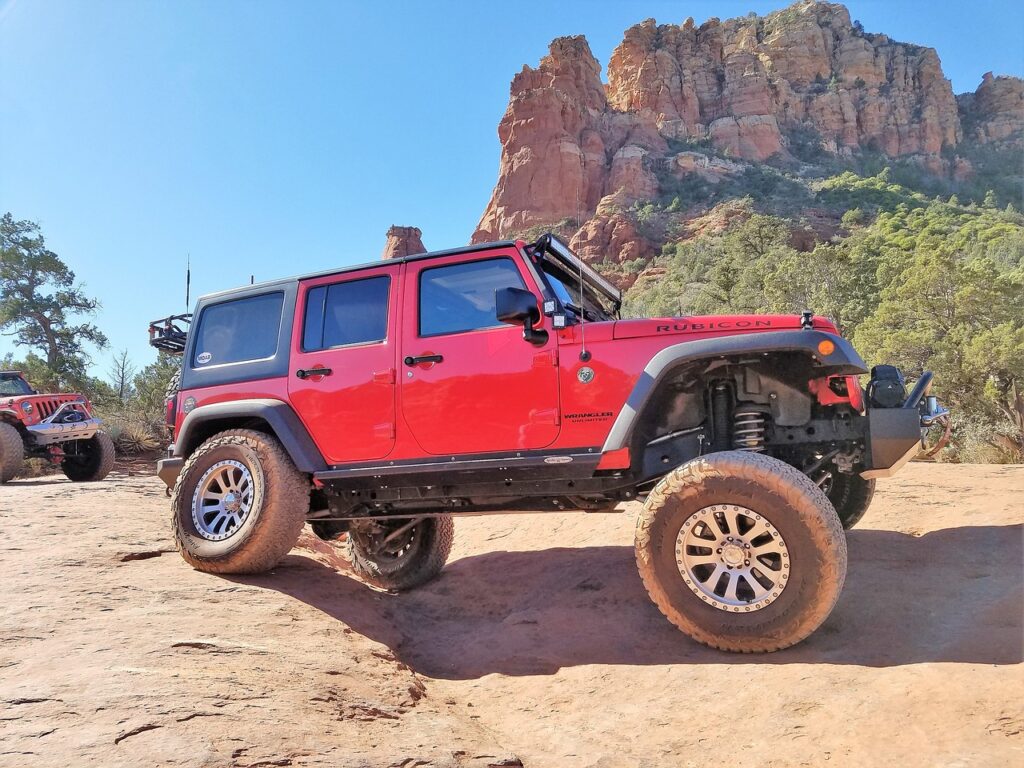
Of course, bigger wheels, sturdier shock absorbers, and springs are very important in off-roading. However, it doesn’t change the fact that in driving through really difficult terrain, the characteristics of the suspension’s work will play the main role.
How much does a suspension lift cost
It’s hard to give a specific price for a lift, as the costs will depend on the height and type of chosen modification. In some cases, to the value of the parts themselves, you also have to add the mechanic’s labor fee. So, the final sum is also very dependent.
We are mainly talking about suspension lifts, and these – as you already know – you can even do with just one set of spacers. You can find them for less than 100 EUR. You could even try to do such a modification yourself, so it’s really cheap. On the other hand, the most expensive lift kits can reach tens of thousands of EUR. And that’s not for extreme lifts above 6”, but for lifts from about 3.5”. Don’t worry, that’s an extreme example. However, if the lift in your off-road vehicle will mainly involve changing spring elements, not disassembling half of the chassis, then recommended kits will start at about 500-1000 EUR.
THIS WILL INTEREST YOU
Can you do a lift on a car yourself
We’ve already mentioned in the previous part of the text that this is possible. However, if you are not a specialist or an amateur mechanic with a well-equipped practical and theoretical workshop, in most cases it’s better to leave the lift installation to a professional service.
If despite the lack of experience, you still consider doing it yourself, we still don’t recommend installation of advanced lifts. But a simple one that involves installing an additional part, not replacing serial components, as is the case in most spacer lifts, you can bravely try to do yourself. You have our green light. Good luck 🙂

















Comments ()